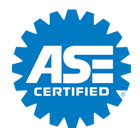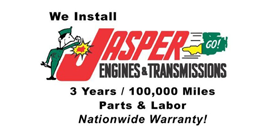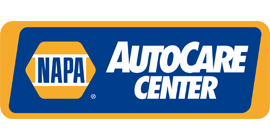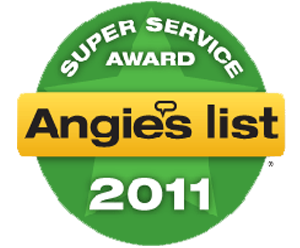AUTONET TV
Archive for February 2022Emergency! (Vehicle Emergency items)Posted February 27, 2022 8:00 AM"I never expected it could happen to me." Countless drivers have said that after they've had an emergency turn their lives upside down. So before that happens to you, let's thinking about planning ahead for an emergency with a few things you should keep in your vehicle.
Other things like basic tools, a first aid kit, a space blanket and jumper cables are also good ideas. Many service repair facilities offer these items for sale, and you can ask your service advisor for suggestions. While it's fresh in your mind, plan a shopping trip and put together your own emergency kit now. Sure, you can put it off, but you may find yourself stuck in a difficult situation, saying to yourself, "Only if…" AutoChoice Service Center Inc. Not Too Hot and Not Too Cold (Temperature Gauge)Posted February 20, 2022 9:26 AMYou know your body temperature is supposed to be 98.6 degrees F, 37 degrees C. Your vehicle has a normal temperature, too, and if you pay attention to it, that can save you some big headaches down the road. Many vehicles have a temperature gauge on the dash that takes the temperature of the engine's coolant. Some have a thermometer symbol, some read C-H (cold to hot). Many will have a red zone that shows when water temperature is getting into the danger zone. Others are digital and have a red warning light that signals overheating. And some vehicles have a light that goes on when the engine temperature is out of the normal range. If your vehicle has a gauge, pay attention to it. If you need help locating it, ask one of our AutoChoice Service Center Inc. experts to give you a quick explanation. Chances are when the vehicle has been running for 15 minutes or more, the temperature gauge will settle into its own "normal" zone, often just below the midway point. If you have a digital readout, remember what that "normal" temperature is. Here's why. At any point when you're driving, the temperature gauge is the quickest way to get a sense that the engine is running the way it should, a quick health checkup, as it were. Say you're on a 3-hour trip, glance at that gauge every hour or so. It should always be in the same spot. If it starts to move one way or the other, you may be able to catch a problem before it gets serious. Pay special attention to it moving into the hot zone. The needle on the gauge is the easiest and least distracting way to see an engine heating up, but on a digital gauge, start paying attention if the temperature reaches 240ºF/115ºC or more. Remember, though, that just because the gauge reads "hot" doesn't mean your engine is on the verge of burning up. It could be a bad sensor and the engine will be at a normal temperature. But it also could be a failing water pump, coolant leak or thermostat. By pulling off the road and observing your engine, it will give you a pretty good idea if it's running hot or not. If the gauge is too "cold," it could be a broken gauge or thermostat sticking open. Usually being in the cold range isn't as worrisome, but you should have it checked out since other systems may be affected. Heat is one of a vehicle's worst enemies, especially when it comes from within. Know your vehicle's normal temperature and keep an eye on it.
The Flat Fix that Fits (Tire Repairs)Posted February 13, 2022 11:19 AMCan you think of anyone who likes getting a flat tire? Of course not. But when one of your tires winds up with a flat or leak, whether it be from things like hitting a curb, running over a nail or picking up a sharp stone, it's time to have someone who knows what they're doing take care of it. If you're thinking you'd like to avoid having to buy a new tire, you wonder if a patch or plug will suffice. It depends where the puncture is and how big the hole is. Most tire experts will say if the hole in the tire is less than ¼ of an inch or 6 mm, a patch can work. But a patch likely won't work if the compromised part of the tire is on its shoulder or sidewall. Here's why. The shoulder of a tire is the part between the sidewall and tread and it's usually rounded. It's under a lot of pressure, more than even the sidewalls. And because of that curved shape, it's hard to get a patch or plug to hold. The sidewall is the side of the tire. Sidewalls flex a lot when you drive, and the strain can cause a patch or plug to loosen up. A weak spot in a sidewall is much more likely to fail and cause a blowout. So if you have damage in the sidewall or shoulder, that tire is a good candidate for replacement, not repair. If you have a cut or gash in your tire, it's possible the cords that strengthen your tire have also been cut. That weak spot can spell trouble, and this type of damage usually means you should get a new one. Your service advisor can tell you what the appropriate action is to take when you have tire damage. You may be able to get good results with a patch, or you may have to replace one or more tires. Your safety is riding on them. AutoChoice Service Center Inc. The Truth about Tire Pressure (Tire Inflation)Posted February 6, 2022 10:04 AMMost light vehicles (under 10,000 pounds/4,500 kg) in North America sold from 2008 model year on have a feature that many people are confused about. It's the tire pressure monitoring system (TPMS). You may have some experience with it yourself if you own a newer vehicle. Vehicles with TPMS have sensors in each tire that are supposed to warn the driver when tire pressure gets dangerously low. That's important because tires that are significantly under-inflated can cause very serious accidents. Unfortunately, many drivers think the TPMS does all the work keeping track of tire pressure. To them, as long as the warning light or gauge isn’t giving a warning, the tires must have the proper amount of air pressure in them. That's not the case. Tire pressure monitoring systems aren't all created equal. Some give you a digital readout of the pressures in each individual tire. But many simply have a warning light that looks like the cross section of a tire with an exclamation point in the middle. If you don't know what it is, it's because it's not instantly recognizable as a tire. In fact, one company that makes TPMS, Schrader Performance Sensors, surveyed drivers. Their study showed that more than 40 percent of drivers didn't know that that warning light was. One out of 5 of the drivers who did know what the light was only looked at their tires after the light came on to see if they could see any that needed air; they never checked them with a tire gauge or had someone else do it. Ten percent of them didn't do anything when the light came on. In most vehicles with TPMS, the warning comes on only when the tires are more than 25% underinflated. The American Automobile Association says that's under the pressure you need for safe vehicle operation. The bottom line is once a month you should make sure your tires are inflated to the manufacturer's recommendations. That means each tire should be measured with an accurate, external tire gauge. To be confident you are getting a correct reading, take your vehicle to a reputable service facility where their equipment is calibrated and they know what they're doing. Severely underinflated tires can contribute to an accident that kills or severely injures people. The idea behind TPMS is well intended, but the system was never meant to replace regular inflation measurements and maintenance. Periodically have your tires checked for proper inflation. AutoChoice Service Center Inc. | ||
SearchArchiveDecember 2009 (4)January 2010 (2) February 2010 (4) March 2010 (4) April 2010 (4) May 2010 (3) June 2010 (1) July 2010 (3) August 2010 (5) September 2010 (2) October 2010 (3) November 2010 (4) December 2010 (5) January 2011 (4) February 2011 (4) March 2011 (5) April 2011 (4) May 2011 (4) June 2011 (2) August 2011 (4) September 2011 (3) October 2011 (1) December 2011 (4) February 2012 (1) March 2012 (5) April 2012 (4) May 2012 (1) June 2012 (3) July 2012 (1) August 2012 (1) November 2012 (1) December 2012 (2) March 2013 (1) April 2013 (3) May 2013 (2) October 2013 (5) November 2013 (2) January 2014 (2) February 2014 (4) March 2014 (1) July 2014 (4) August 2014 (7) September 2014 (4) October 2014 (5) November 2014 (4) December 2014 (5) January 2015 (4) February 2015 (4) March 2015 (4) April 2015 (4) May 2015 (2) June 2015 (6) July 2015 (2) September 2015 (3) October 2015 (3) November 2015 (5) December 2015 (1) March 2016 (5) April 2016 (4) May 2016 (5) June 2016 (4) July 2016 (4) August 2016 (5) September 2016 (4) October 2016 (5) November 2016 (4) December 2016 (4) January 2017 (5) February 2017 (4) March 2017 (4) April 2017 (4) May 2017 (5) June 2017 (4) July 2017 (5) August 2017 (3) September 2017 (3) October 2017 (5) November 2017 (4) December 2017 (3) January 2018 (5) February 2018 (4) March 2018 (4) April 2018 (5) May 2018 (4) June 2018 (4) July 2018 (5) August 2018 (4) September 2018 (5) October 2018 (4) November 2018 (4) December 2018 (5) January 2019 (5) February 2019 (4) March 2019 (5) April 2019 (4) May 2019 (4) June 2019 (5) July 2019 (4) August 2019 (4) September 2019 (5) October 2019 (4) November 2019 (4) December 2019 (5) January 2020 (5) February 2020 (4) March 2020 (5) April 2020 (4) May 2020 (5) June 2020 (4) July 2020 (3) August 2020 (5) September 2020 (4) October 2020 (4) November 2020 (5) December 2020 (4) January 2021 (6) February 2021 (4) March 2021 (4) April 2021 (4) May 2021 (5) June 2021 (4) July 2021 (4) August 2021 (5) September 2021 (4) October 2021 (5) November 2021 (4) December 2021 (4) January 2022 (6) February 2022 (4) March 2022 (4) April 2022 (4) May 2022 (5) June 2022 (4) July 2022 (5) August 2022 (4) September 2022 (4) October 2022 (5) November 2022 (4) December 2022 (4) January 2023 (5) February 2023 (4) March 2023 (4) April 2023 (5) May 2023 (4) June 2023 (4) July 2023 (5) August 2023 (4) September 2023 (3) October 2023 (1) January 2024 (1) February 2024 (4) | CategoriesParts (7)Automotive News (8)Service Standards (12)Maintenance (52)Fuel System (46)Transmission (11)Tires and Wheels (40)Monitoring System (3)Dashboard (3)Steering (14)Battery (20)Service Intervals (9)Brakes (22)Cabin Air Filter (8)Drive Train (9)Fluids (16)Shocks & Struts (9)Inspection (10)Headlamps (6)Timing Belt (6)Windshield Wipers (9)Check Engine Light (6)Alignment (16)Cooling System (19)Air Conditioning (17)Safety (6)Differential Service (3)Diagnostics (5)Fuel Economy (10)Engine Air Filter (2)Exhaust (12)Keys to a long lasting vehicle (4)Diesel Maintenance (1)Suspension (3)Serpentine Belt (6)Older Vehicles (4)Emergency Items (1)Alternator (6)Winter Prep (7)Fuel Saving Tip: Slow Down (2)Auto Safety (6)Trip Inspection (4)What Customers Should Know (81)Warranty (1)Tire Rotation and Balancing (3)Wheel Bearings (1)Oil Change (7)Safe Driving (1)Customer Detective Work (1)Tires (10)Spark Plugs (2)Water Pump (1)Winter Tires (1)TPMS (3)Transfer Case Service (1)PCV Valve (2)Brake Service (4)Fuel Pump (1)Shocks and Struts (1) | |
Reviews
|
I had my car in a while back for brake work and once again I was extremely pleased with Auto Choice. They are professional and honest (a rare combination) and I know that the work will be done correctly. I drive a Subaru and I completely trust my technician Jake to diagnose and expertly correct any issues that come up. I definitely will be back the next time I need anything car related. Thank you Jake and Auto Choice! Cathy Kinsman, 04/17/2024 |
|
|











